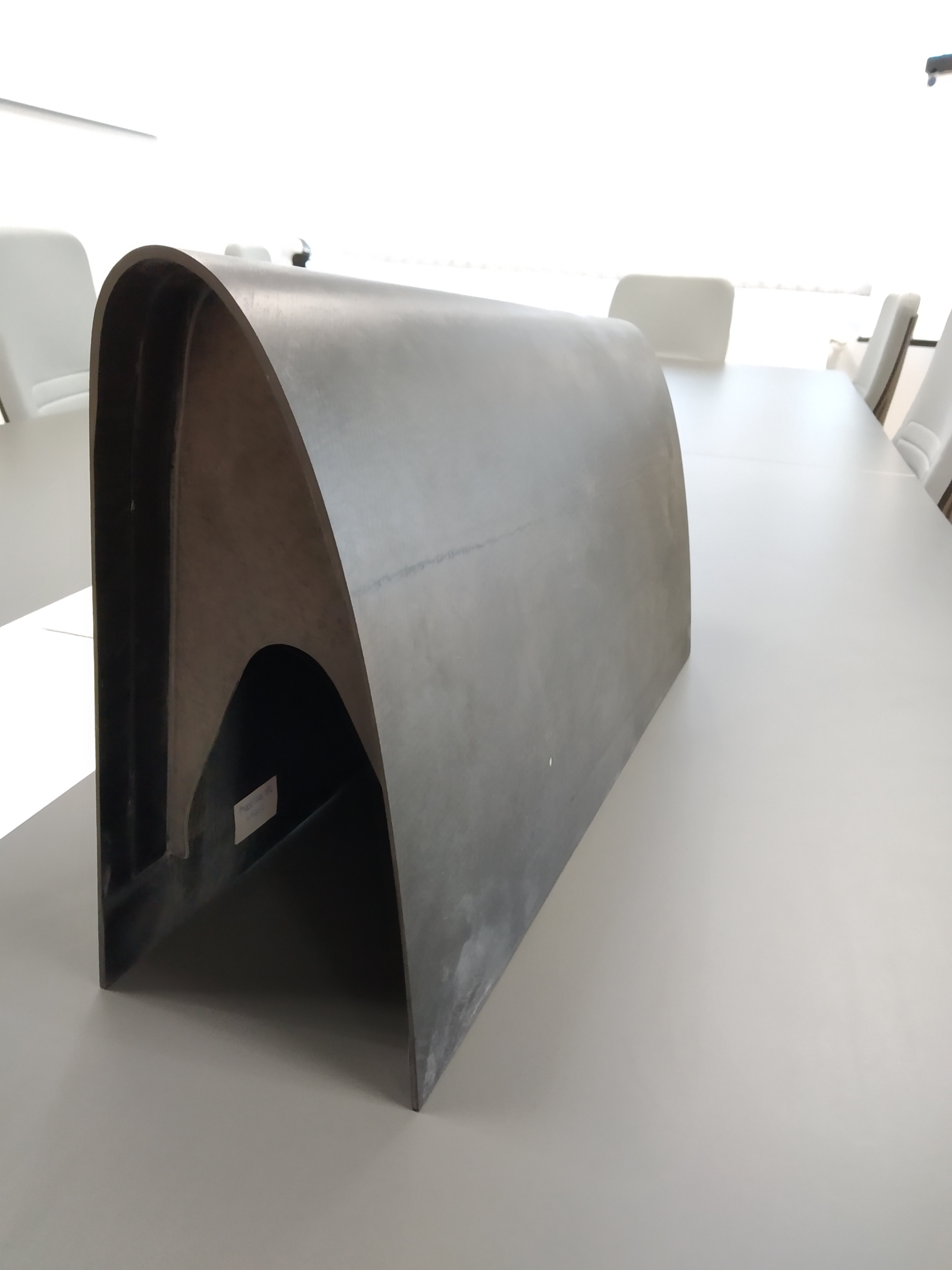 • Preform tool produced in less than sixty hours using Stratasys F900 Production System and ULTEM™ 1010 resin, significantly less than the four weeks typically required using conventional manufacturing methods
• Preform tool produced in less than sixty hours using Stratasys F900 Production System and ULTEM™ 1010 resin, significantly less than the four weeks typically required using conventional manufacturing methods
• Compared to CNC machining using aluminum, IDEC saved 67% costs
At JEC World, Stratasys today reveals how leading Spanish provider of composite solutions for aerospace, IDEC, has cut the time, cost and material waste involved with traditional composite molding, thanks to its use of Stratasys additive manufacturing.
In a government-funded project, IDEC set about achieving these efficiency objectives by exploring the capabilities of Resin Transfer Molding (RTM) technology. This centered around the testing of a new composite material and its molding process for the manufacture of a curved aircraft wing.
With the support of advanced prototyping service provider, Wehl & Partner, IDEC overcame a challenging requirement to replace aluminum in a tooling application involving electric current. Specifically, this required a preform tool to be produced in a high-temperature and high-pressure resistant material.
Using its Stratasys’ F900 Production System, acquired through Stratasys’ Spanish distributor, Pixel Sistemas, Wehl & Partner selected the non-conductive and resilient ULTEM™ 1010 resin to manufacture a large-scale preform tool. The material’s excellent chemical and heat-resistance enabled it to withstand the required temperatures exceeding 150° C, as well as high pressures.
Lead time to produce preform tool slashed from four weeks to 60 hours
According to Diego Calderón, Structural Analysis Manager at IDEC, these attributes simplified the preform production process, and also delivered huge efficiency savings.
“Stratasys additive manufacturing enabled us to produce the preform tool in just 60 hours. With CNC machining, it would have taken at least four weeks to produce this type of part,” he explains. “Indeed, not only did we slash the production lead-time on the preform tool, but we also expedited the whole composite molding process.
“In fact, with ULTEM™ 1010 resin, we reduced the composite heating stage from one hour to only ten minutes by flowing the electrical current directly through composite fabrics. This would simply not have been possible without Stratasys FDM additive manufacturing,” continues Calderón.
Crucially, the team has also been able to save up to 67% of the costs of CNC machining using aluminum.
Overcoming an unusual challenge
IDEC’s particular constraint in producing the aircraft wing centred around the preform tool itself. Designed to facilitate the composite lay-up process into the mold at a later stage and accelerate the curing process, such preform tools are typically made of aluminum or epoxy resin. The composite fiber is laid up on top of the preform and the tool is subsequently heated to take the shape of the mold.
The challenge in this instance, was that instead of heating the preform tool, the unusual application required the composite material itself to be heated using an electric current sent through the composite fiber. Consequently, highly conductive metals like aluminum were inappropriate and would prevent the current from effectively going through the fabric.
According to Calderón, standard epoxy materials available inside the company were neither resistant nor stable enough to withstand temperatures exceeding 140°C.
“This project required high temperatures of between 150°C and 180°C to heat the fabrics directly, which made Stratasys FDM additive manufacturing and the use of ULTEM™ 1010 resin, in particular, the perfect choice,” he explains. “Although there are epoxy resins resistant to such high temperatures, these are very expensive, and would not have been financially viable.”
For IDEC, its use of ULTEM™ 1010 resin resulted in a preform tool with perfect mechanical properties that has enabled the company to utilize it as part of the RTM process. According to Calderón, the preform is so solid that the team can use it for at least 25 cycles, something simply not possible with epoxy or other additive manufacturing technologies and similar materials.


















































































